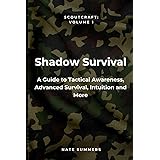Eating Muskrat: A Surprising Delicacy from the Wild
For those passionate about bushcraft, survival, and exploring unconventional food sources, the idea of trying new wild game is always intriguing. In the video above, we witness a firsthand experience with preparing and tasting muskrat meat, revealing its surprisingly palatable qualities. Historically, muskrat was a much more common protein source, deeply integrated into the diets of early settlers and Indigenous communities across North America. Today, its consumption is less widespread, yet it remains a viable and delicious option for the adventurous palate.
Many wild game enthusiasts find themselves asking: Is muskrat meat truly good to eat? Can this often-overlooked critter offer a tasty and nutritious meal? The answer, as demonstrated in the video, is a resounding yes. With the right preparation, muskrat meat can transform into a tender, flavorful dish, challenging preconceived notions about what constitutes a gourmet meal in the wilderness. It’s an opportunity to connect with historical foodways and discover a sustainable source of protein right in our local ecosystems.
Understanding Muskrat as a Food Source
Muskrats (Ondatra zibethicus) are semi-aquatic rodents native to North America, known for their abundance in wetlands, marshes, and slow-moving rivers. Their diet primarily consists of aquatic vegetation, such as cattails, water lilies, and sedges, though they are omnivores and will occasionally eat small fish, mussels, and crayfish. This largely vegetarian diet is a significant factor contributing to the mild and often pleasant flavor of their meat, distinguishing it from some other wild game that might have a stronger, gamy taste. Their prevalence in diverse ecosystems made them an accessible food source for centuries.
Historically, muskrat meat played a crucial role in the diets of various Native American tribes, who utilized every part of the animal for sustenance, clothing, and tools. During the colonial period and through the 19th and early 20th centuries, muskrat was also a popular protein source for trappers, pioneers, and rural communities, especially in regions like the Chesapeake Bay area and parts of the Midwest. It was often marketed under more appealing names such as “marsh hare” or “swamp rabbit” to encourage broader consumption, demonstrating its historical acceptance as a staple meat.
Preparing Muskrat Meat for Culinary Enjoyment
Proper preparation is key to enjoying any wild game, and muskrat meat is no exception. As highlighted in the video, obtaining a good “muskrat chop” or “backstrap” is a fantastic starting point. The backstraps, in particular, are known for their tenderness, similar to other small game. Field dressing the animal promptly and carefully skinning it are important first steps to ensure the meat’s quality and remove any glands that might impart unwanted flavors.
Once harvested, the meat should be cleaned thoroughly. Some prefer to soak game meats in saltwater or vinegar solutions for a few hours, or even overnight, to further tenderize and draw out any lingering gamey flavors. While the video kept the preparation simple, this soaking step can enhance the eating experience, especially for those new to wild game. It is a common practice among seasoned hunters and trappers who frequently prepare a variety of small game.
Simple and Delicious Cooking Methods for Muskrat
The video showcases a wonderfully straightforward and effective cooking method: sautéing the muskrat backstrap and chops in butter with simple seasonings. This approach allows the natural flavors of the meat to shine. Butter provides richness and helps create a beautiful sear, while salt and pepper are fundamental enhancers for any savory dish. These basic ingredients truly highlight the meat’s natural profile and tenderness when cooked correctly.
A unique addition in the video was ground juniper berries, a seasoning that pairs exceptionally well with many wild game meats. Juniper offers a distinct piney, peppery, and slightly citrusy note, complementing the rich flavors of game without overpowering them. Furthermore, other herbs like rosemary, thyme, or bay leaves can also elevate the muskrat’s flavor profile. Braising or stewing muskrat are also popular methods, especially for tougher cuts, yielding incredibly tender results over longer cooking times, making it a versatile meat for various recipes.
Taste Profile and Nutritional Value
Perhaps the most compelling revelation from the video is the taste comparison: “That does taste like lamb.” This feedback is incredibly encouraging for anyone hesitant to try muskrat. Many wild game meats, particularly those from herbivores or omnivores with primarily vegetarian diets, can indeed offer flavor profiles similar to familiar domestic meats. The tenderness observed in the video’s backstrap further enhances its appeal, making it a genuinely pleasant culinary surprise.
From a nutritional standpoint, wild game like muskrat meat is often celebrated for being lean, high in protein, and rich in essential nutrients. On average, wild game tends to have less fat and cholesterol than commercially raised livestock, while offering significant amounts of B vitamins (B1, B2, B3, B6, B12), iron, zinc, and other vital minerals. For example, a 3-ounce serving of lean game meat typically provides around 25-30 grams of protein, making it an excellent source for muscle building and overall health. Incorporating muskrat into your diet can be a nutritious way to diversify your protein intake and utilize local, sustainable resources.
Cooking Safety and Enjoying Your Wild Harvest
As with all wild game, ensuring the muskrat meat is cooked thoroughly is paramount for food safety. The video correctly emphasizes, “You definitely want to cook this through.” This practice helps eliminate any potential parasites or bacteria that might be present in wild animals. Using a meat thermometer to ensure an internal temperature of at least 160°F (71°C) is a reliable way to guarantee safety, especially for cuts that are thicker or when cooking methods like sautéing are used.
Embracing muskrat meat is more than just trying a new food; it’s an opportunity to connect with traditional food sources, understand the local ecosystem, and expand your culinary horizons. Its mild, tender, and surprisingly lamb-like flavor makes it an excellent candidate for the adventurous home chef or bushcraft enthusiast. The next time you are out in the wilderness, consider the humble muskrat as a potential and delicious addition to your menu, providing a nutritious and satisfying meal from nature’s bounty.











